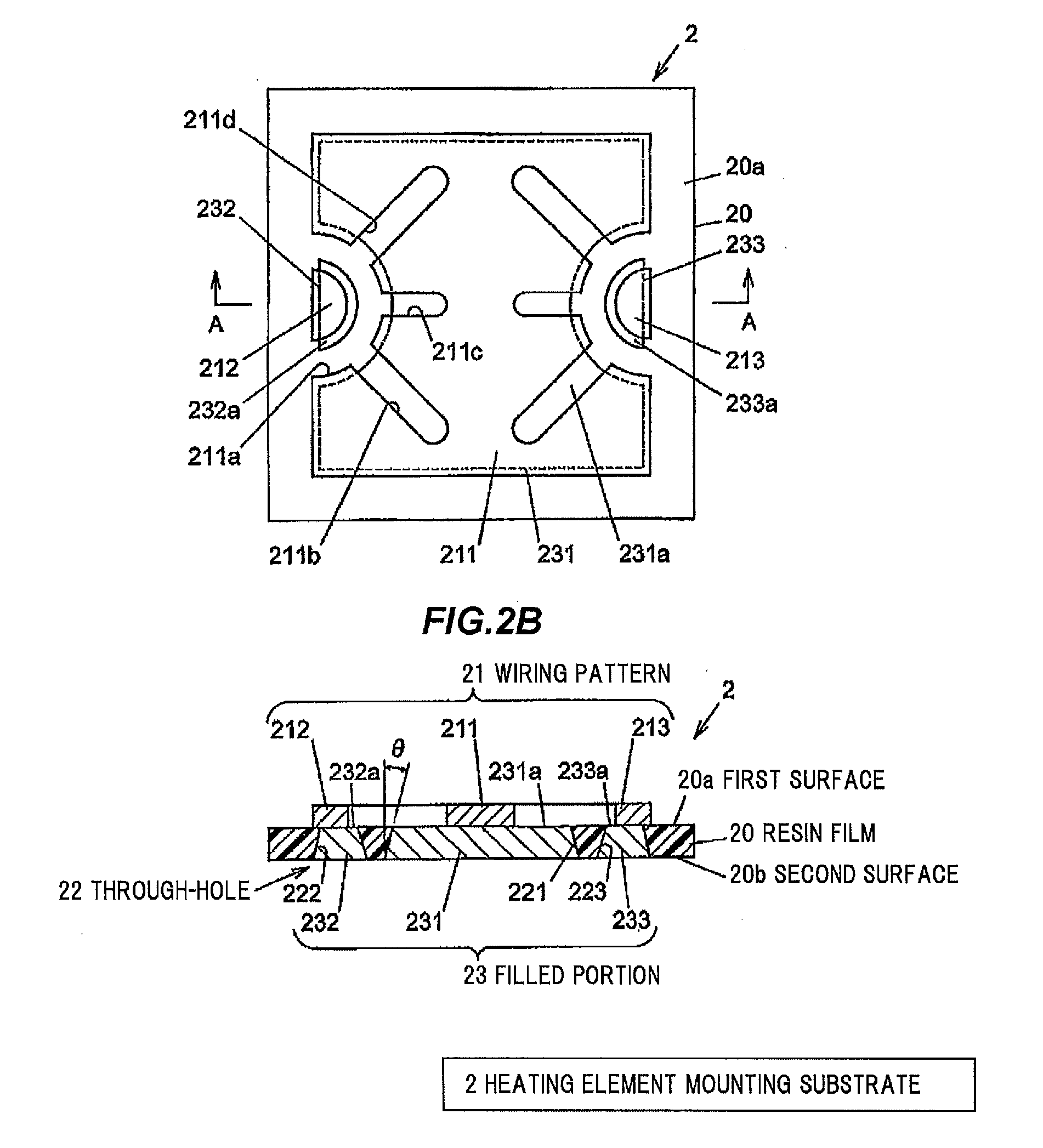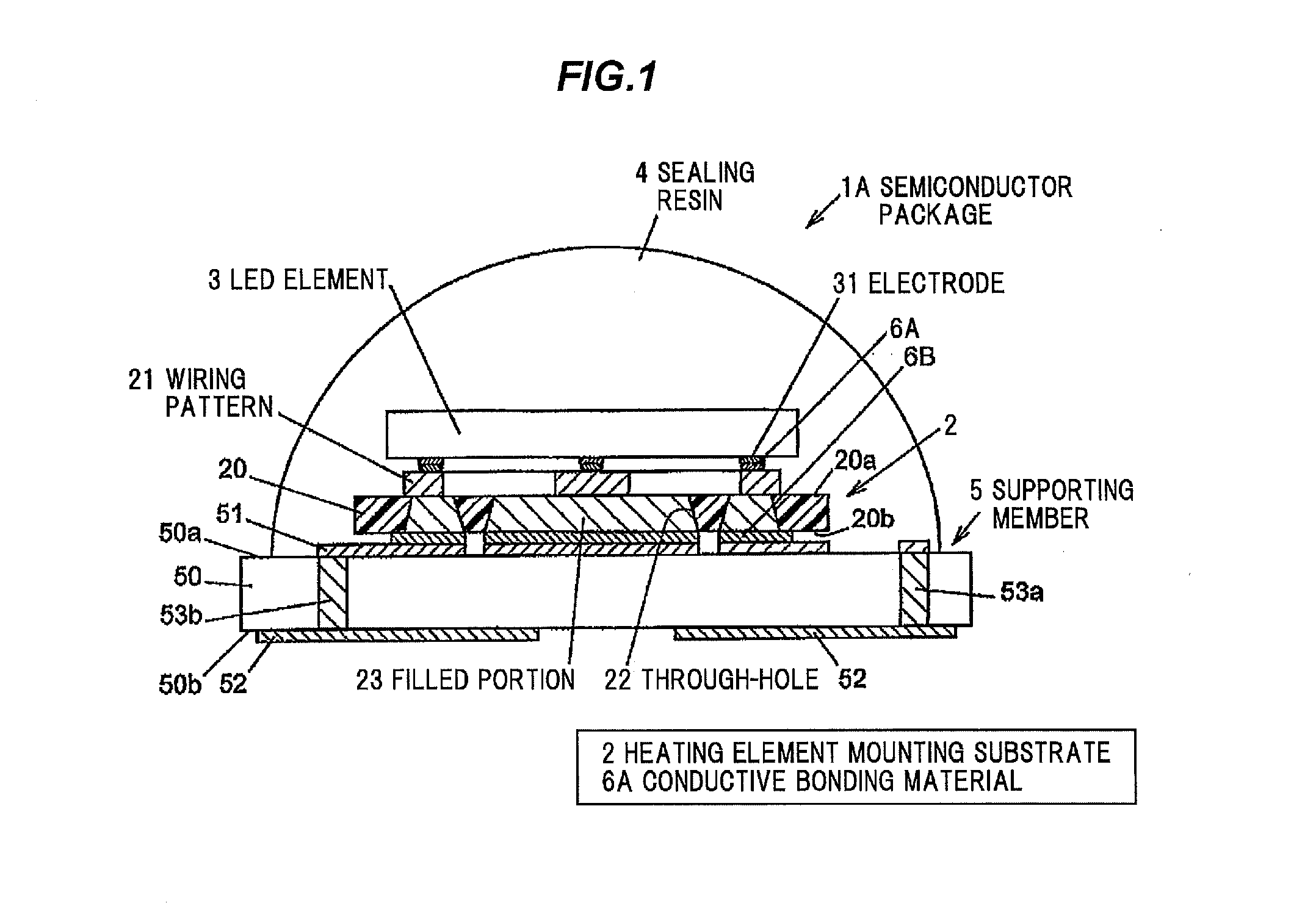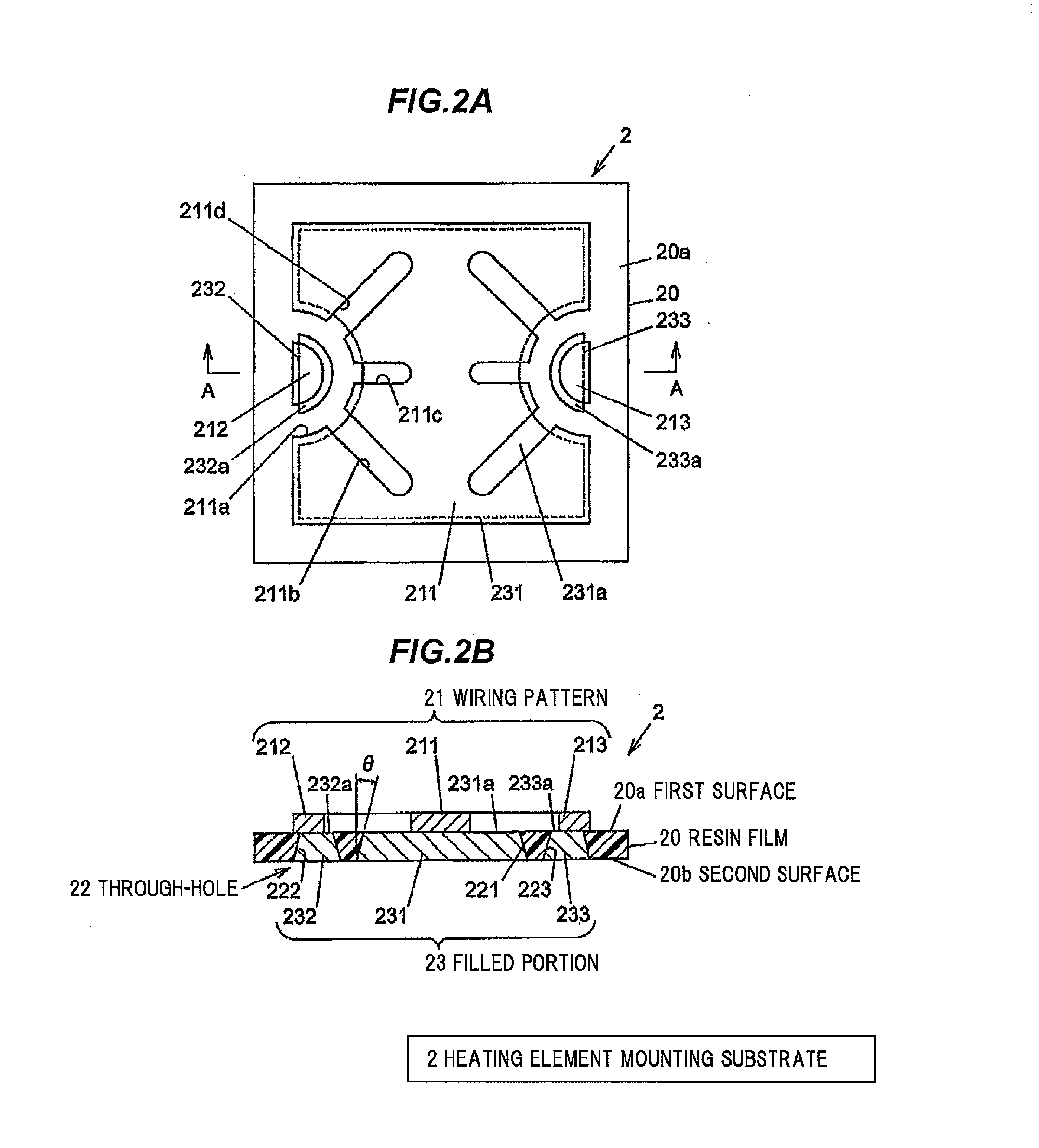Heating element mounting substrate, method of manufacturing the same and semiconductor package
- Summary
- Abstract
- Description
- Claims
- Application Information
AI Technical Summary
Benefits of technology
Problems solved by technology
Method used
Image
Examples
first embodiment
[0051]FIG. 1 is a cross sectional view showing a semiconductor package in a first embodiment of the invention. For forming a semiconductor package 1A, an LED element 3 is flip-chip mounted on a heating element mounting substrate 2, the heating element mounting substrate 2 mounting the LED element 3 thereon is mounted on a supporting member 5 and the LED element3 is sealed with a sealing resin 4.
[0052]Heating Element Mounting Substrate
[0053]FIGS. 2A and 2B show a heating element mounting substrate 2, wherein FIG. 2A is a plan view and FIG. 2B is a cross sectional view taken on line A-A of FIG. 2A. The heating element mounting substrate 2 is a so-called single-sided printed circuit board having a wiring on one surface of a substrate, and is provided with a resin film 20 having a first surface 20a and a second surface 20b opposite to the first surface 20a, wiring patterns 21 (211, 212 and 213) formed on the first surface 20a of the resin film 20, and filled portions 23 (231, 232 and 23...
second embodiment
[0095]FIG. 7 is a cross sectional view showing a semiconductor package in a second embodiment of the invention. A semiconductor package 1B is configured in the same manner as the first embodiment except that the heating element mounting substrate 2 is arranged upside down.
[0096]That is, in the semiconductor package 1B of the second embodiment, the wiring patterns 21 of the heating element mounting substrate 2 are connected to the front-surface wiring pattern 51 of the ceramic substrate 50 by the conductive bonding material 6B and the LED element 3 is flip-chip mounted on the filled portions 23 of the heating element mounting substrate 2 via the conductive bonding material 6A. The LED element 3 is mounted on the second surface 20b of the heating element mounting substrate 2 (resin film 20).
[0097]In the second embodiment, it is possible to manufacture in the same manner as the first embodiment. In other words, the heating element mounting substrate 2 is made in the same manner as the ...
third embodiment
[0104]FIG. 9 is a cross sectional view showing a semiconductor package in a third embodiment of the invention. FIG. 10 is a cross sectional view showing a state in which an LED element is flip-chip mounted on a heating element mounting substrate in the third embodiment. A semiconductor package 1C is configured in the same manner as the second embodiment except that the filled portion 23 has a two-layer structure.
[0105]In the heating element mounting substrate 2 of the third embodiment, the filled portion 23 is filled in the through-hole 22 of the resin film 20 up to half or more of the thickness of the resin film 20 and the remaining portion of the through-hole 22 is filled with the conductive bonding material 6C as shown in FIG. 10. Alternatively, the filled portion 23 may be about half or not more than half of the thickness of the resin film 20.
[0106]In the semiconductor package 1C of the third embodiment, the wiring patterns 21 of the heating element mounting substrate 2 are conn...
PUM
 Login to View More
Login to View More Abstract
Description
Claims
Application Information
 Login to View More
Login to View More - R&D
- Intellectual Property
- Life Sciences
- Materials
- Tech Scout
- Unparalleled Data Quality
- Higher Quality Content
- 60% Fewer Hallucinations
Browse by: Latest US Patents, China's latest patents, Technical Efficacy Thesaurus, Application Domain, Technology Topic, Popular Technical Reports.
© 2025 PatSnap. All rights reserved.Legal|Privacy policy|Modern Slavery Act Transparency Statement|Sitemap|About US| Contact US: help@patsnap.com



